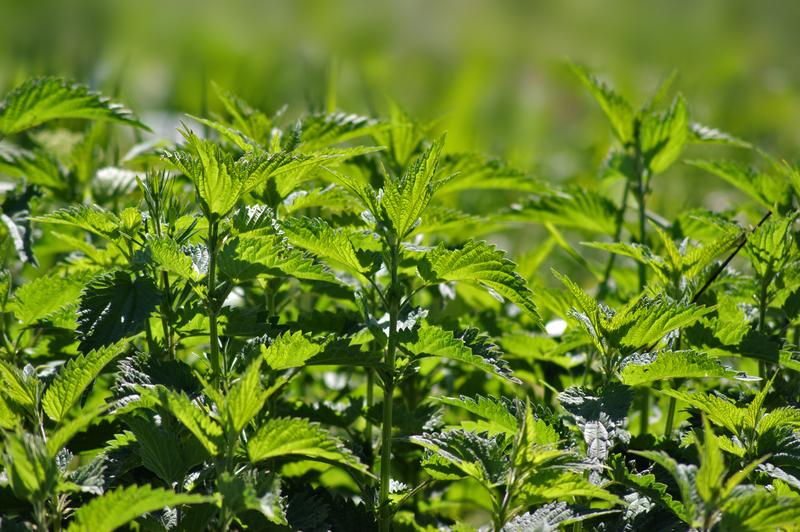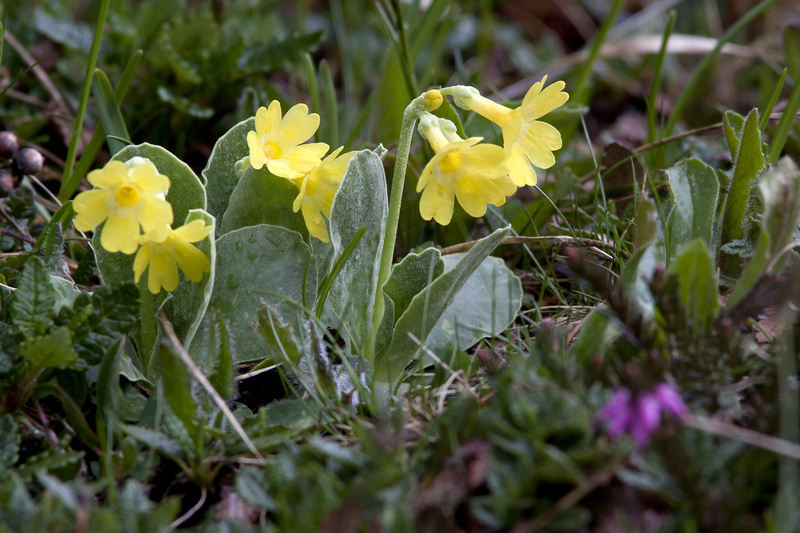Gardening on a Shoestring: 5 Easy Low Maintenance Ideas
Posted on 01/07/2025
Gardening on a Shoestring: 5 Easy Low Maintenance Ideas
Gardening doesn't have to be an expensive or time-consuming hobby. Many aspiring green thumbs think a beautiful garden is out of their reach due to cost or lack of time. However, gardening on a shoestring budget is not only possible, but it can also be extremely rewarding. Whether you have a balcony, patio, or backyard, there are plenty of creative, low maintenance gardening ideas to help you cultivate a thriving outdoor space without breaking the bank.
In this comprehensive guide, we'll explore five easy and affordable gardening ideas that require minimal effort, materials, and expense. Whether you're a beginner or an experienced gardener seeking simplicity, these ideas will help you enjoy the fruits (and flowers) of your labor while saving both money and time.
Why Choose Low Maintenance Gardening?
Low maintenance gardening is all about maximizing beauty and productivity with minimal input. If you choose the right strategies, you can:
- Save money by reusing materials and choosing robust plants.
- Conserve water and resources, making your garden eco-friendly.
- Minimize your time investment, freeing you up for other activities.
- Enjoy a rewarding, stress-free hobby that suits busy lifestyles.
With the right approach, anyone can achieve a vibrant and flourishing garden on a limited budget.

1. Repurpose and Recycle for Your Garden
Turn Everyday Items Into Garden Supplies
One of the best ways to practice budget gardening is by repurposing household items. Not only does this approach save money, but it's also sustainable and creative!
- Old containers and jars can become unique plant pots.
- Broken buckets or storage bins make excellent large planters.
- Plastic bottles and milk jugs can be cut and converted into watering cans, seedling shelters, or seed starters.
- Pallets can be used to create vertical gardens or compost bins.
- Egg cartons and toilet paper rolls work well for seed starting and are biodegradable.
Don't be afraid to experiment! A little innovation can go a long way, offering both financial and environmental benefits. Before throwing things away, ask yourself: Can this be used in my garden?
DIY Garden Decor
Make your garden stand out by crafting DIY decorations. Painted stones, homemade bird feeders from soda bottles, and wind chimes from old cutlery all add personality without costing a fortune.
2. Choose Low Maintenance Plants
Easy-Care Plant Options for Frugal Gardeners
Selecting hardy, drought-resistant plants is a crucial part of successful low-cost, low maintenance gardening. These plants require minimal watering, fertilizing, and general upkeep:
- Herbs: Parsley, thyme, mint, and oregano are resilient and double as culinary powerhouses.
- Succulents and cacti: Perfect for containers, these plants thrive on neglect and little water.
- Lavender and rosemary: These perennials are beautiful, fragrant, and fantastic for pollinators.
- Native wildflowers: Usually suited to local climates and soil, wildflowers support bees and require minimal maintenance.
- Vegetables like radishes and lettuce: Fast-growing and forgiving for beginners.
- Daylilies, sedum, and hostas: Excellent choices for shady or low-attention garden zones.
Pro Tip: Ask friends and neighbors for plant cuttings or divisions. Swapping plants is a brilliant way to expand your garden for free!
Embrace Perennials
Perennial plants come back year after year, saving you the hassle and expense of replanting annually. Invest in a few key perennials and watch your garden bloom for seasons to come -- gardening on a shoestring just got easier.
3. Create Mulched or Groundcover Beds
Simplify with Mulch and Groundcovers
Mulch is a frugal gardener's best friend. By spreading a layer of organic material, such as wood chips, straw, or even shredded leaves, you help retain moisture, suppress weeds, and enrich the soil -- all with less work.
- Collect fallen leaves in the autumn for free mulch.
- Use grass clippings (in thin layers) for both mulching and composting.
- Ask tree companies for free wood chips from their chipping services.
Bonus: Apply mulch generously in flower borders, around shrubs, or in vegetable beds to instantly upgrade your garden's appearance while drastically lowering maintenance needs.
Groundcover Plants: The Living Mulch
Groundcovers such as creeping thyme, ajuga, or sedum serve as living mulch. They act as a natural weed barrier, retain soil moisture, and fill bare patches with attractive foliage -- all with barely any effort from you.
4. Smart Container Gardening on a Budget
Grow More with Less Space and Money
If yard space is limited or if you prefer more control over your garden's microclimate, container gardening is an ideal solution for gardening on a shoestring. It's versatile, scalable, and can be started anywhere -- from balconies to fire escapes.
- Upcycle old buckets, crates, or washbasins as pots -- just drill some drainage holes!
- Scout thrift stores or yard sales for inexpensive pots or planters.
- Grow compact herbs, salad greens, or cherry tomatoes in containers for kitchen convenience.
- Try a vertical herb wall using hanging shoe organizers or recycled bottles.
Tip for Low Maintenance: Use a high-quality potting mix and mulch the surface of containers to minimize watering frequency and keep weeds at bay.
Self-Watering Containers
You can make DIY self-watering containers out of two stacked buckets and a piece of fabric or wicking material. This simple project can cut watering chores in half, making your shoestring gardening project practically self-sufficient!
5. Water Wisely and Harvest Rainwater
Low-Cost, Eco-Friendly Irrigation
The cost of water can be a major concern -- but there are numerous ways to save water and money in your garden:
- Harvest rainwater in barrels or buckets. Use the free water to irrigate your plants during dry spells.
- Reuse 'grey water' (such as leftover cooking water, if unsalted) to water garden beds.
- Water in the early morning or evening to maximize absorption and reduce evaporation.
- Group plants with similar water needs together for more efficient watering.
DIY Drip Irrigation
Create a homemade drip irrigation system using old hoses or plastic bottles with small holes poked in them. Bury or place these near plant roots -- they'll slowly deliver moisture where it's needed most, with almost no ongoing work required.
Bonus: Start a Community Garden Project
If your resources are especially limited or you crave companionship, consider teaming up with neighbors for a shared gardening project. Community gardens allow you to:
- Pool resources and tools, reducing everyone's expenses.
- Buy seeds and plants in bulk for group discounts.
- Share labor and harvests, lowering individual effort.
- Learn from each other and grow as a gardening community.
Community gardening on a budget is a great way to maximize returns and minimize investment -- both financial and personal.

Tips for Sustainable, Shoestring Gardening Success
- Compost your kitchen scraps for free, nutrient-rich fertilizer.
- Shop end-of-season sales at local nurseries for discounted plants and supplies.
- Share, trade, or swap seeds and plants within your local community.
- Be patient: A shoestring garden may start small, but it will bloom and multiply as you invest love and a little time.
Common Questions About Gardening on a Shoestring
- Can I really grow food with almost no investment?
Yes! Many vegetables can be grown from kitchen scraps or seeds saved from produce. Potatoes, lettuce, and spring onions are just a start. - What's the lowest-maintenance plant for containers?
Succulents and herbs like thyme or chives require the least effort and attention. - How do I prevent weeds naturally?
Use mulch, groundcovers, and avoid disturbing the soil unnecessarily. Hand-pulling as needed is effective for small spaces.
Final Thoughts: Simple, Affordable, and Rewarding
Gardening on a shoestring is about harnessing resourcefulness and creativity. By repurposing materials, choosing tough plants, using mulch, gardening in containers, and watering wisely, you can develop a lovely, productive garden without hefty expenses or high maintenance demands. Remember, the best garden is one that brings you joy and satisfaction -- even if it grows in an old bucket on your balcony.
Get started with these easy, low-maintenance ideas and watch your garden -- and savings -- thrive!

